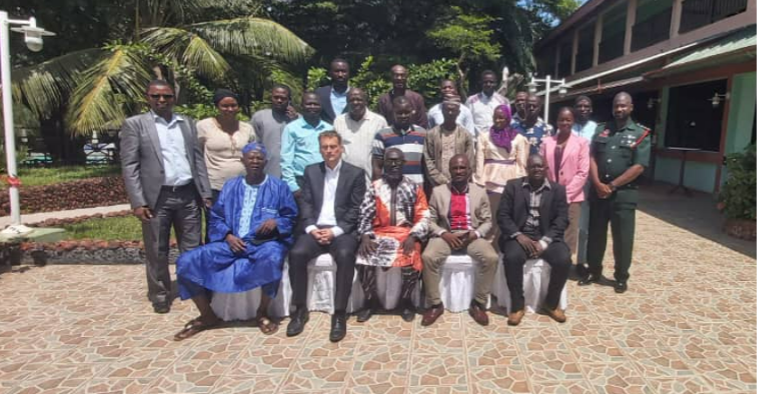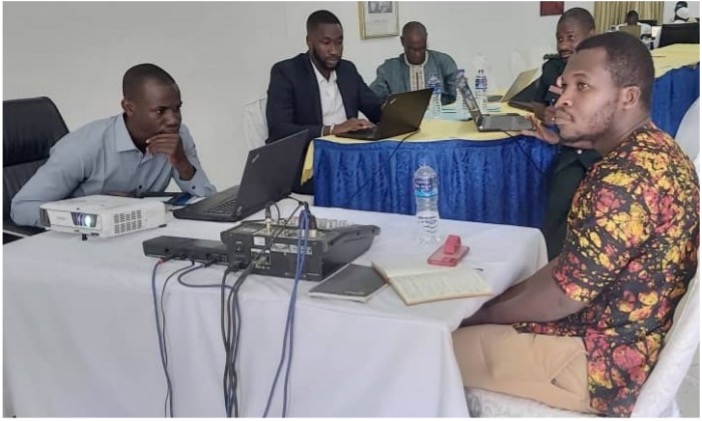
The Gambia Conducts Review, Update and Resource Mapping for the National Action Plan for Health Security
Area of Work REMAP - Date: 19 December 2022 | Region African Region - Country Gambia
The Gambia and the Gambian Ministry of Health, with support from the World Health Organization, conducted an exercise in resource mapping to advance implementation of the activities in the NAPHS (2022-2026).
The workshop, held between 3-5 October 2022 in Banjul, involved use of the resource mapping (REMAP) tool and process developed by WHO to identify financial and technical support for health security in the country, as well as needs for support.

The face-to-face workshop brought together more than 30 participants including representatives from multisectoral line ministries and agencies including: Ministry of Health; Ministry of Agriculture; Gambia Armed Forces; National Pharmaceutical Services; National Public Health Laboratory; Gambia Immigration Department;; Food Safety Quality Authority; National Environment Agency; National Disaster Management Agency.
The Multisectoral Engagement for Health Security (MHS) Unit at WHO Headquarters supported the exercise in close collaboration with the WHO Regional Office for Africa and the WHO Country Office in The Gambia. Partners and donors were also invited to participate in the workshop.
The REMAP tool and process was used to map the health security projects that partners and the government are supporting in the country at national and subnational levels, allowing policymakers, donors, and partners to see where gaps exist and where more investment of financial and technical resources is needed.
The resource mapping demonstrated that little funding is currently committed directly for NAPHS activities. However, more than $28 million in partner support for overall health security activities in the country (beyond the NAPHS) was mapped. This can be leveraged to support NAPHS implementation in addition to the salary and infrastructure support being provided by the government, which is often the implementing agency in health security activities.

The mapping demonstrated that the partner support is heavily weighted toward areas such as food safety, biosafety and biosecurity and immunization. Major gaps were identified in areas such as Medical Countermeasures, Real Time Surveillance, Antimicrobial Resistance and Workforce Development, where $50,000 in partner health security support was mapped compared to nearly $11 million costed in Workforce Development activities in the NAPHS.
The process involved identification of the key partners and stakeholders who are supporting health security in the country, as well as their priority areas, which can be used to facilitate coordination and alignment for NAPHS.
Workshop participants further used the REMAP tool and process to map the human resource needs for implementation of the NAPHS activities. The national experts identified whether outside technical assistance was needed to complete each NAPHS activity and, if so, what specific assistance was required. This portion of the exercise was designed to support The Gambia in the identification and matching of technical partners that can support.
A range of NAPHS activities were identified as in need of expert technical assistance for completion, with areas of particular need including Biosafety and Biosecurity, National Laboratory System, Real Time Surveillance, Workforce Development, Risk Communication and Radiation Emergencies. The workshop participants further prioritized 52 of the NAPHS activities as most urgently requiring international expert technical support.
Although the NAPHS was not yet launched, workshop participants indicated that implementation had begun, particularly in areas such as National Legislation, Food Safety and Immunization, with overall NAPHS implementation status at least 4 percent. The REMAP tool can be used to further update the status as activities progress.
The tool and dashboard provides Excel and online platforms for visualizing NAPHS implementation in the country and for national focal points to use in the ongoing tracking and analysis of health security resources in The Gambia, as the resource mapping is meant to be an ongoing process with partners invited to share information and become involved in a coordinated multisectoral approach to strengthening preparedness.